Malignant neoplasm of transverse colon. Transverse Colon Cancer: Diagnosis, Challenges, and Treatment Approaches
What are the key characteristics of transverse colon cancer. How is it diagnosed and what complications can arise. What are the surgical considerations for treating this form of colorectal cancer. How does the prognosis compare to other colon cancers.
Understanding Transverse Colon Cancer: Incidence and Presentation
Transverse colon cancer accounts for approximately 10% of all colorectal cancer cases. This form of cancer presents unique challenges due to its location and often delayed diagnosis. How does transverse colon cancer typically manifest? The progression of symptoms is often insidious, meaning patients may not notice clear warning signs until the tumor has grown significantly. By the time of diagnosis, tumors are often voluminous, leading to more complex treatment scenarios.
Are there distinct features of right-sided versus left-sided transverse colon tumors? Indeed, the location within the transverse colon impacts presentation:
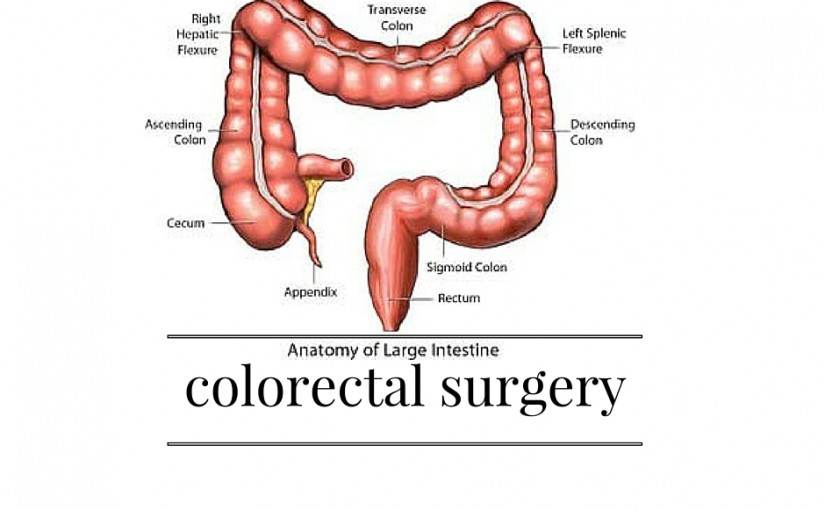
- Right-sided tumors: Typically bulky and discovered at a later stage
- Left-sided (distal) tumors: Often smaller, annular lesions prone to causing obstruction
Diagnostic Challenges and Complications
Why is diagnosing transverse colon cancer often delayed? The central location of the transverse colon and the gradual onset of symptoms contribute to diagnostic challenges. This delay can lead to serious complications in 30-50% of cases, including:
- Perforation
- Fistulization
- Obstruction
How can perforation manifest in transverse colon cancer? Right-sided tumors that perforate may lead to abdominal wall or retroperitoneal abscesses. Additionally, tumors can extend or fistulize into adjacent organs, further complicating the clinical picture.
Advanced Stage at Presentation
What proportion of transverse colon cancers are advanced at diagnosis? Alarmingly, 20-40% of cases present as T4 lesions, indicating local invasion beyond the colon wall. This high rate of advanced presentation contributes to the challenging nature of treating transverse colon cancer.
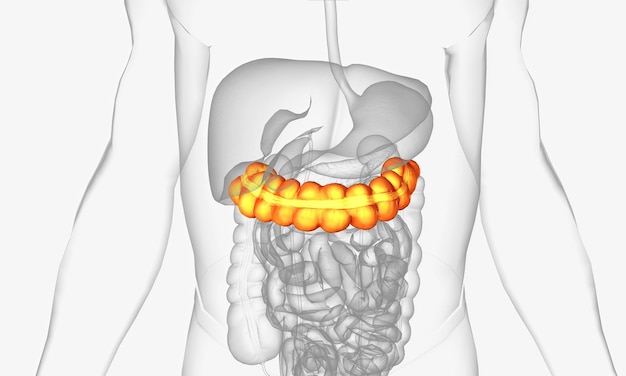
Diagnostic Imaging and Differential Diagnosis
Which imaging modality is most effective for evaluating transverse colon cancer? Abdominal CT is considered the best test to assess the loco-regional extension of advanced tumors. It provides detailed information about tumor size, local invasion, and potential metastases.
Why does transverse colon cancer pose diagnostic challenges? The central location of these tumors results in an extensive differential diagnosis. Symptoms may mimic various other abdominal conditions, necessitating a thorough diagnostic workup to accurately identify the cancer.
Surgical Considerations and Challenges
What makes surgery for transverse colon cancer particularly complex? The central location of these tumors poses difficult surgical decisions in several areas:
- Lymph node dissection
- Extent of resection
- Re-establishment of intestinal continuity
How do these factors impact surgical planning? Surgeons must carefully balance the need for complete tumor removal and adequate lymph node sampling with preserving bowel function and minimizing surgical morbidity. The proximity to other vital structures and the potential for extensive local invasion further complicate surgical decision-making.
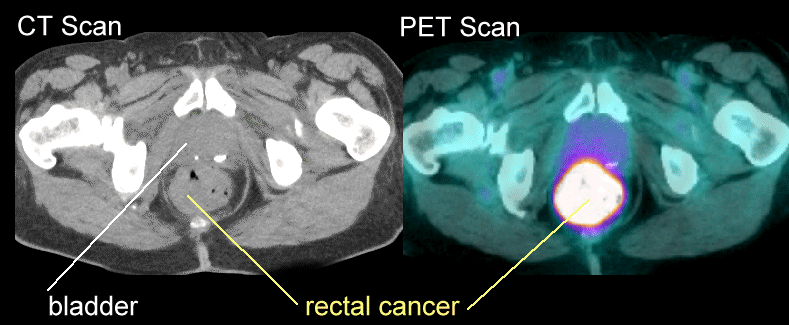
Historical Perspective on Treatment Outcomes
What do older surgical series reveal about transverse colon cancer outcomes? Studies from the 1970s and 1980s paint a sobering picture:
- Curative resections achieved in only 50% of cases
- Morbidity and mortality rates around 20%
- Global five-year survival less than 35%
Why were these outcomes considered particularly poor? Compared to other forms of colorectal cancer, transverse colon cancer was associated with lower rates of curative resection and poorer overall survival. These historical data contributed to the perception of transverse colon cancer as having a particularly unfavorable prognosis.
Advancements in Treatment Approaches
Have treatment outcomes improved since these historical studies? While the article doesn’t provide recent data, it’s important to note that colorectal cancer treatment has evolved significantly since the 1980s. Modern surgical techniques, improved imaging for staging, and advancements in chemotherapy and targeted therapies have likely improved outcomes for patients with transverse colon cancer.

Multidisciplinary Approach
How are complex cases of transverse colon cancer managed today? A multidisciplinary approach is crucial, involving:
- Surgical oncologists
- Medical oncologists
- Radiation oncologists
- Radiologists
- Pathologists
This team-based approach allows for comprehensive treatment planning, taking into account the unique challenges posed by transverse colon tumors.
Importance of Early Detection and Screening
Given the challenges associated with transverse colon cancer, how critical is early detection? The high rate of advanced-stage presentation underscores the importance of colorectal cancer screening programs. Early detection through methods such as colonoscopy can identify tumors before they become locally advanced or metastatic, potentially improving treatment outcomes.
Risk Factors and Prevention
Are there specific risk factors for transverse colon cancer? While the article doesn’t detail risk factors specific to transverse colon cancer, general colorectal cancer risk factors apply:
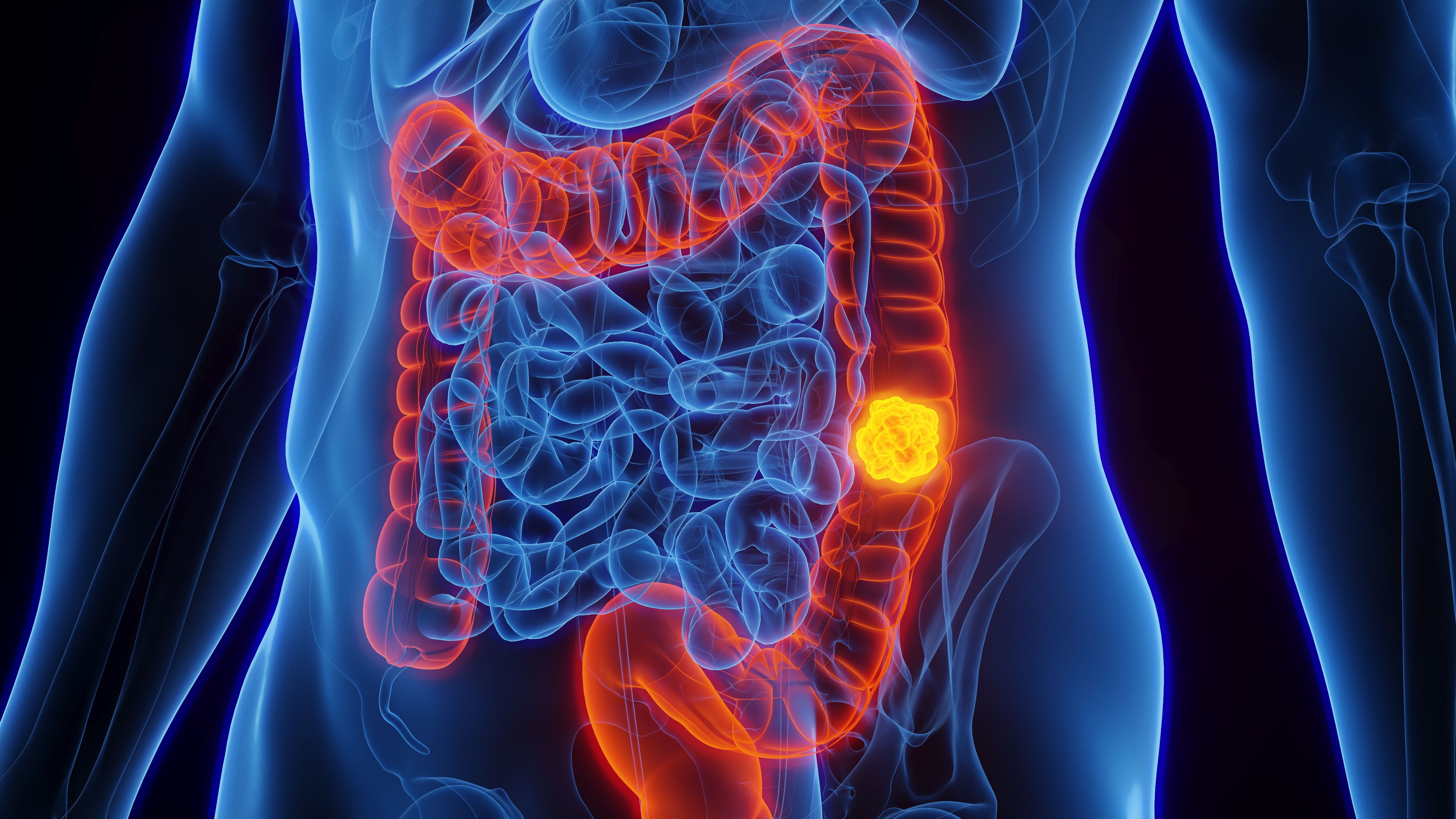
- Age (increasing risk over 50)
- Family history of colorectal cancer
- Inflammatory bowel disease
- Lifestyle factors (diet, obesity, smoking)
Addressing modifiable risk factors and adhering to screening guidelines are crucial steps in prevention and early detection.
Future Directions in Research and Treatment
What areas of research could improve outcomes for transverse colon cancer patients? Several avenues warrant further investigation:
- Tailored surgical approaches for the unique anatomical challenges
- Targeted therapies based on molecular profiling of tumors
- Improved imaging techniques for earlier detection and more accurate staging
- Novel chemotherapy regimens specific to transverse colon cancer biology
How might personalized medicine impact transverse colon cancer treatment? As our understanding of tumor genetics and molecular markers improves, treatment strategies may become more individualized. This could lead to more effective therapies with fewer side effects, potentially improving both survival rates and quality of life for patients.

Clinical Trials and Emerging Therapies
Are there ongoing clinical trials specifically for transverse colon cancer? While the article doesn’t mention specific trials, it’s likely that broader colorectal cancer studies include patients with transverse colon tumors. Participating in clinical trials, when appropriate, can provide access to cutting-edge treatments and contribute to advancing our understanding of this challenging cancer.
Patient Education and Support
How can patients and caregivers be better prepared to manage transverse colon cancer? Education is key to empowering patients throughout their cancer journey. Important aspects include:
- Understanding the unique challenges of transverse colon cancer
- Being aware of potential complications and when to seek medical attention
- Learning about treatment options and potential side effects
- Accessing support resources for both physical and emotional well-being
What role do support groups play in patient care? Connecting with others who have experienced transverse colon cancer can provide valuable emotional support and practical advice. Support groups, whether in-person or online, can be an important complement to medical care.

Nutritional Considerations for Transverse Colon Cancer Patients
How does transverse colon cancer impact nutritional status? The location and potential complications of transverse colon tumors can significantly affect digestion and nutrient absorption. Patients may experience:
- Changes in appetite
- Difficulty digesting certain foods
- Weight loss
- Malnutrition
What dietary strategies can help manage these challenges? Working with a registered dietitian is crucial for developing a personalized nutrition plan. Strategies may include:
- Small, frequent meals to ease digestion
- High-protein, nutrient-dense foods to combat weight loss
- Avoiding foods that exacerbate symptoms (e.g., high-fiber foods during periods of obstruction)
- Proper hydration to support overall health and treatment tolerance
Nutritional Support During Treatment
How can nutrition impact treatment outcomes? Proper nutrition is essential for:
- Maintaining strength during treatment
- Supporting the immune system
- Improving treatment tolerance
- Enhancing recovery after surgery
In some cases, enteral or parenteral nutrition may be necessary to ensure adequate nutritional support, particularly for patients with severe obstruction or following extensive surgery.
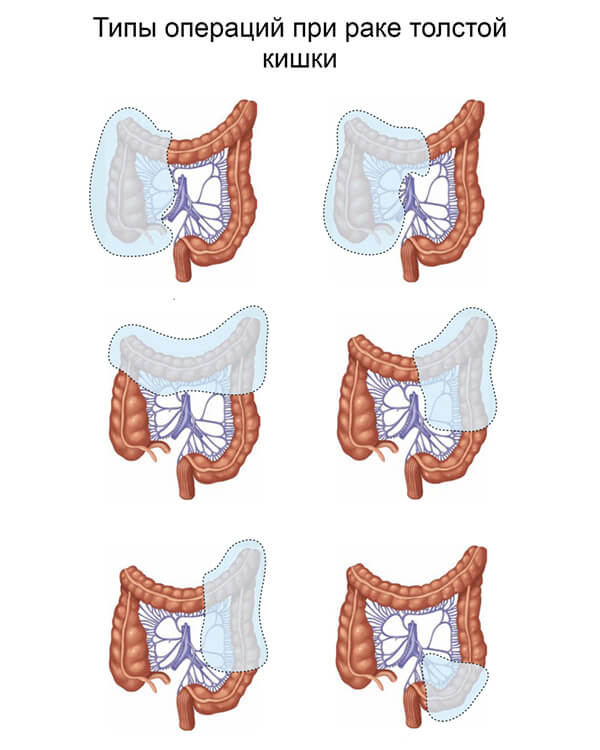
Quality of Life Considerations
How does transverse colon cancer impact quality of life? The central location of these tumors and potential complications can significantly affect daily life. Patients may experience:
- Chronic abdominal pain
- Changes in bowel habits
- Fatigue
- Emotional distress
What strategies can help improve quality of life for patients? A holistic approach to care is essential, addressing both physical and emotional needs. This may include:
- Pain management techniques
- Physical therapy to improve mobility and strength
- Psychological support or counseling
- Occupational therapy to assist with daily activities
- Palliative care services when appropriate
Long-term Survivorship
What challenges do long-term survivors of transverse colon cancer face? As treatment outcomes improve, more patients are living with the long-term effects of their cancer and its treatment. Issues may include:
- Chronic gastrointestinal symptoms
- Risk of recurrence or secondary cancers
- Psychological impact of cancer survivorship
- Adjusting to changes in body image and function
How can healthcare systems better support long-term survivors? Comprehensive survivorship programs are crucial, offering:
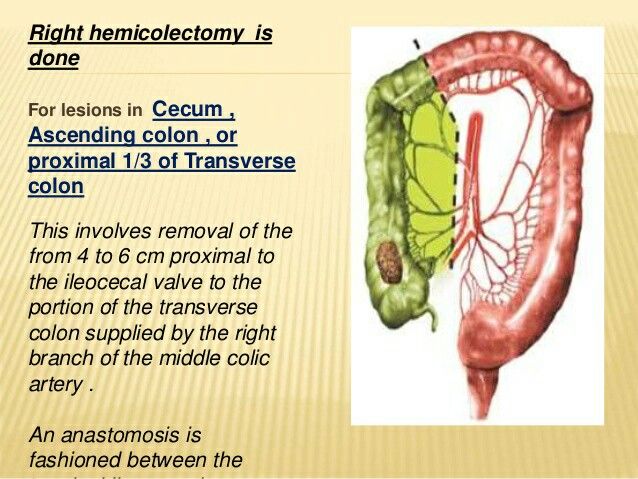
- Regular follow-up and surveillance
- Management of long-term treatment effects
- Psychosocial support
- Lifestyle interventions to reduce recurrence risk
- Education on recognizing signs of recurrence
The Role of Genetics in Transverse Colon Cancer
Are there genetic factors specifically associated with transverse colon cancer? While the article doesn’t detail genetic aspects, it’s important to consider the role of genetics in colorectal cancer broadly:
- Hereditary syndromes (e.g., Lynch syndrome, FAP)
- Specific genetic mutations (e.g., APC, KRAS, BRAF)
- Microsatellite instability (MSI) status
How does genetic information impact treatment decisions? Understanding the genetic profile of a tumor can guide treatment in several ways:
- Identifying hereditary syndromes that may affect family members
- Guiding the choice of targeted therapies
- Predicting response to certain chemotherapy regimens
- Informing decisions about the extent of surgery needed
Genetic Testing and Counseling
When should genetic testing be considered for transverse colon cancer patients? Factors that may prompt genetic testing include:
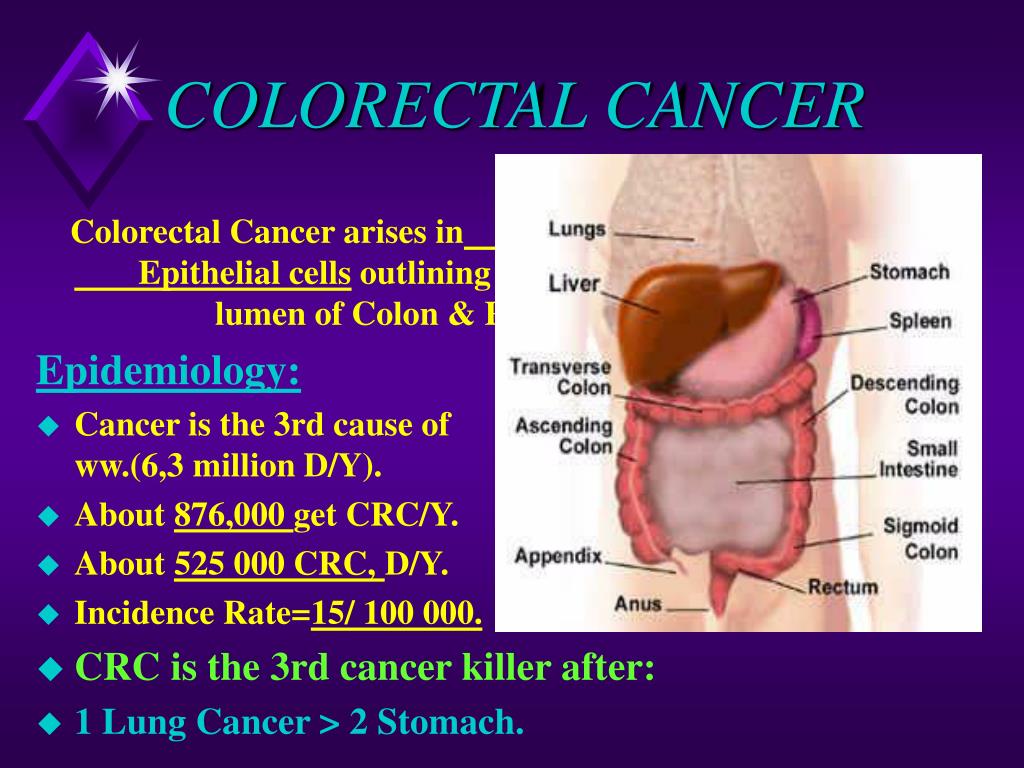
- Young age at diagnosis
- Family history of colorectal or related cancers
- Specific tumor characteristics (e.g., MSI-high status)
Genetic counseling is an essential component of this process, helping patients understand the implications of genetic testing for themselves and their families.
Emerging Technologies in Diagnosis and Treatment
What new technologies are shaping the future of transverse colon cancer care? While not specifically mentioned in the article, several emerging technologies are likely to impact management:
- Liquid biopsies for early detection and monitoring
- Advanced imaging techniques for more precise staging
- Robotic-assisted surgery for complex resections
- Artificial intelligence for treatment planning and prognostication
How might these technologies improve outcomes? The potential benefits include:
- Earlier detection of primary tumors and recurrences
- More accurate staging to guide treatment decisions
- Less invasive surgical options with faster recovery
- Personalized treatment plans based on comprehensive data analysis
Challenges in Implementing New Technologies
What obstacles must be overcome to integrate these technologies into routine care? Several factors may impact adoption:
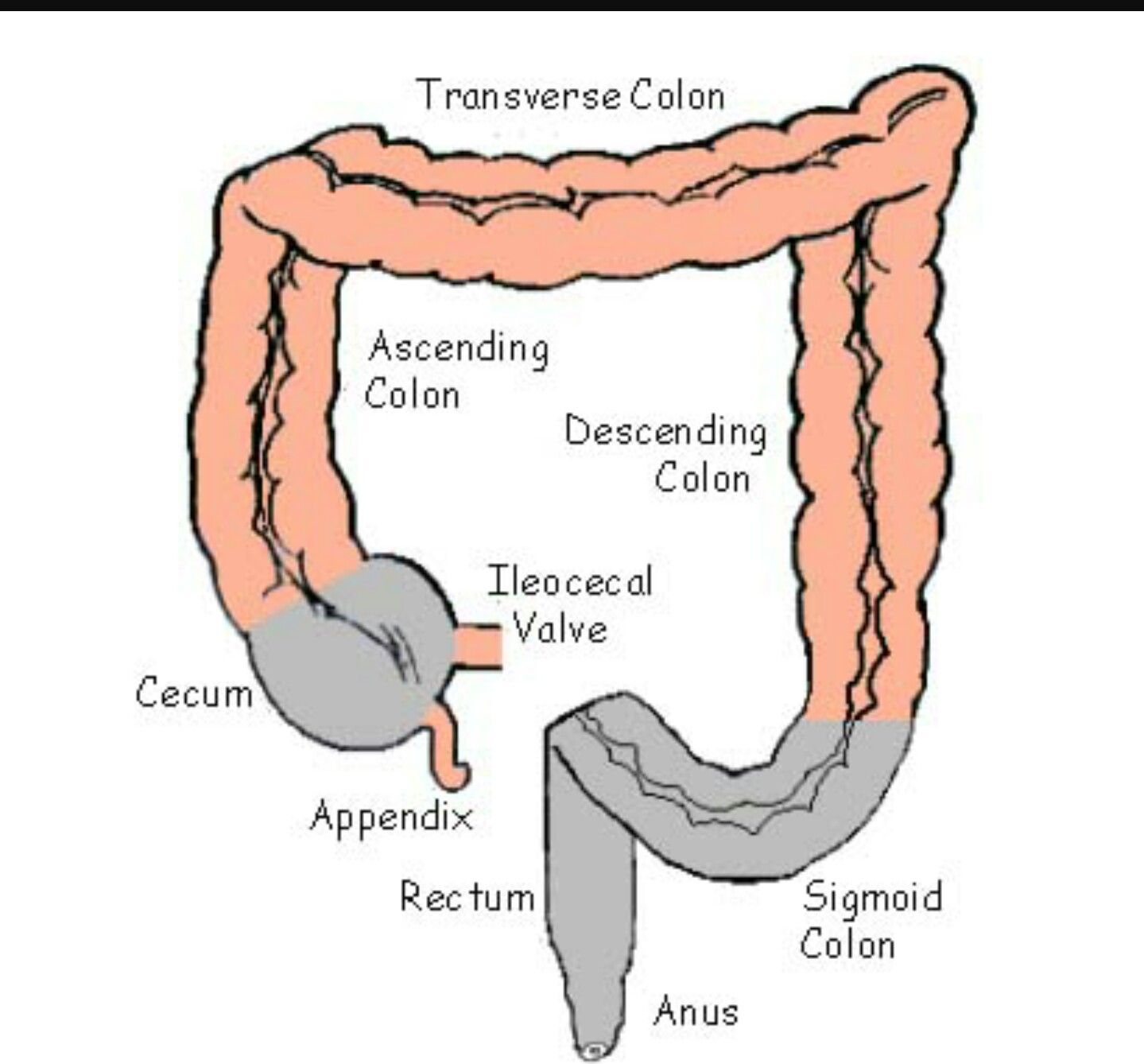
- Cost and accessibility of advanced technologies
- Training healthcare providers in new techniques
- Ensuring equity in access to cutting-edge treatments
- Validating new approaches through rigorous clinical trials
Addressing these challenges will be crucial to ensuring that all patients with transverse colon cancer can benefit from technological advancements in cancer care.
[Carcinoma of the transverse colon]
Save citation to file
Format:
Summary (text)PubMedPMIDAbstract (text)CSV
Add to Collections
- Create a new collection
- Add to an existing collection
Name your collection:
Name must be less than 100 characters
Choose a collection:
Unable to load your collection due to an error
Please try again
Add to My Bibliography
- My Bibliography
Unable to load your delegates due to an error
Please try again
Your saved search
Name of saved search:
Search terms:
Test search terms
Email:
(change)
Which day?
The first SundayThe first MondayThe first TuesdayThe first WednesdayThe first ThursdayThe first FridayThe first SaturdayThe first dayThe first weekday
Which day?
SundayMondayTuesdayWednesdayThursdayFridaySaturday
Report format:
SummarySummary (text)AbstractAbstract (text)PubMed
Send at most:
1 item5 items10 items20 items50 items100 items200 items
Send even when there aren’t any new results
Optional text in email:
Create a file for external citation management software
Full text links
Elsevier Science
Full text links
Review
. 2006 Sep-Oct;143(5):285-93.
2006 Sep-Oct;143(5):285-93.
doi: 10.1016/s0021-7697(06)73693-6.
[Article in
French]
P Lê
1
, L Mehtari, C Billey
Affiliations
Affiliation
- 1 Service de Chirurgie Générale, Centre Hospitalier de l’Agglomération Montargoise, Montargis.
PMID:
17185954
DOI:
10.1016/s0021-7697(06)73693-6
Review
[Article in
French]
P Lê et al.
J Chir (Paris).
2006 Sep-Oct.
. 2006 Sep-Oct;143(5):285-93.
doi: 10. 1016/s0021-7697(06)73693-6.
1016/s0021-7697(06)73693-6.
Authors
P Lê
1
, L Mehtari, C Billey
Affiliation
- 1 Service de Chirurgie Générale, Centre Hospitalier de l’Agglomération Montargoise, Montargis.
PMID:
17185954
DOI:
10.1016/s0021-7697(06)73693-6
Abstract
Carcinoma of the transverse colon accounts for 10% of all colorectal cancer. Diagnosis is often delayed and complicated forms (perforation, fistulization, obstruction) occur in 30-50% of cases. The progression of symptoms is often insidious and tumors may be voluminous by the time of diagnosis.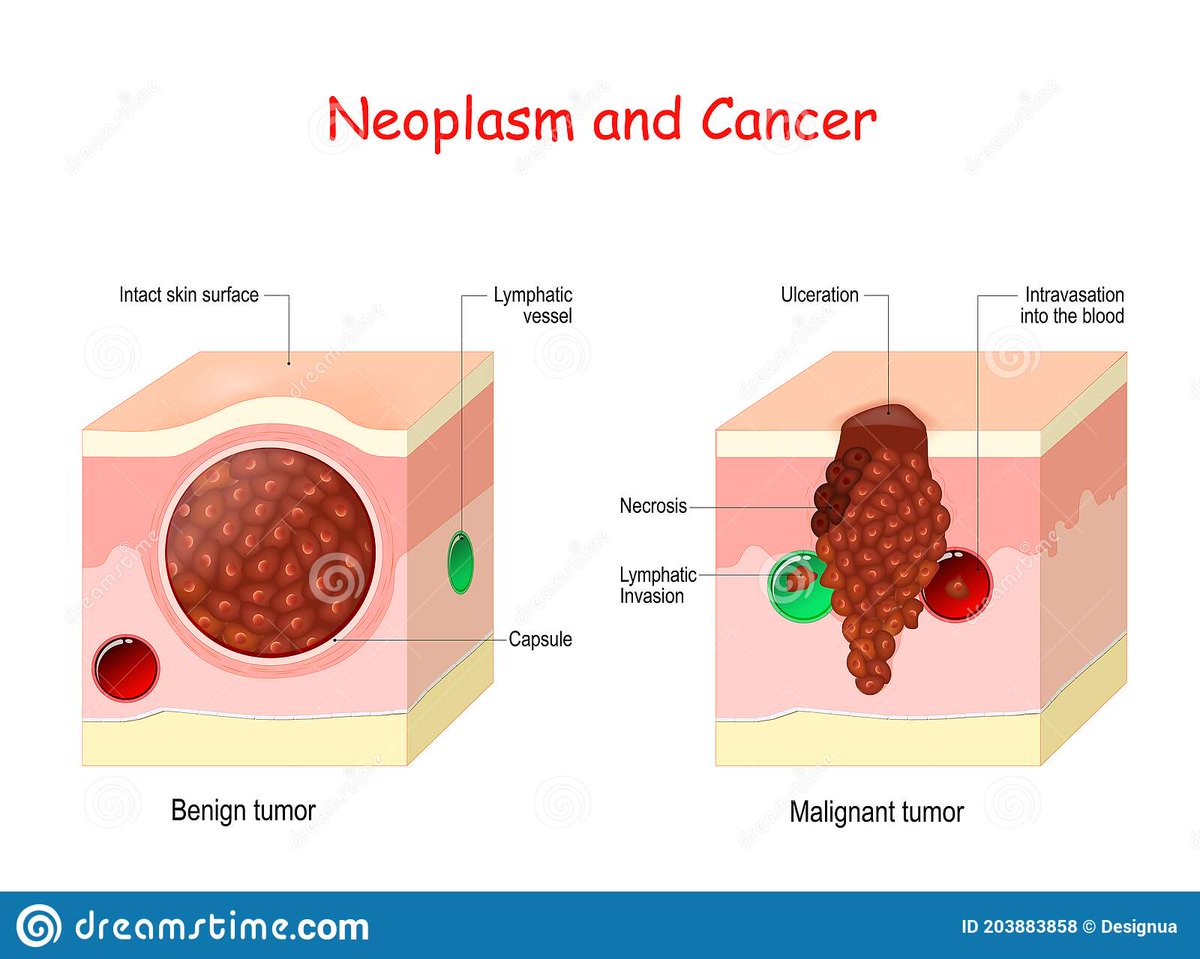 Right sided tumors are typically bulky and late-stage; perforation may lead to abdominal wall or retroperitoneal abscess. Tumor can also extend or fistulize into adjacent organs. Distal transverse cancers may be small annular lesions which are prone to obstruction. Cancers present as T4 lesions in 20-40% of cases. Abdominal CT is the best test to evaluate the loco-regional extension of advanced tumors. Their central location and advanced stage at presentation results in an extensive differential diagnosis. This central location also poses difficult surgical choices for lymph node dissection, extent of resection, and re-establishment of intestinal continuity. Surgical series which focus on transverse colon cancer date from the 1970-80’s; they show curative resections in only 50% with morbidity/mortality of 20% and a global five year survival of less than 35%; they were considered to have a particularly poor prognosis.
Right sided tumors are typically bulky and late-stage; perforation may lead to abdominal wall or retroperitoneal abscess. Tumor can also extend or fistulize into adjacent organs. Distal transverse cancers may be small annular lesions which are prone to obstruction. Cancers present as T4 lesions in 20-40% of cases. Abdominal CT is the best test to evaluate the loco-regional extension of advanced tumors. Their central location and advanced stage at presentation results in an extensive differential diagnosis. This central location also poses difficult surgical choices for lymph node dissection, extent of resection, and re-establishment of intestinal continuity. Surgical series which focus on transverse colon cancer date from the 1970-80’s; they show curative resections in only 50% with morbidity/mortality of 20% and a global five year survival of less than 35%; they were considered to have a particularly poor prognosis.
Similar articles
[Pancreaticoduodenectomy performed in a patient with transverse colon cancer associated with a duodenal fistula – a case report].

Koumori K, Makino H, Kametaka H, Fukada T, Seike K, Koyama T.
Koumori K, et al.
Gan To Kagaku Ryoho. 2014 Nov;41(12):1660-2.
Gan To Kagaku Ryoho. 2014.PMID: 25731287
Japanese.
[The role of subtotal/total colectomy in the urgent treatment of obstructive cancer of the left colon].
Arnaud JP, Cervi C, Duplessis R, Cattan F.
Arnaud JP, et al.
J Chir (Paris). 1997 Dec;134(7-8):267-70.
J Chir (Paris). 1997.PMID: 9772986
French.
[Cancer of the transverse colon: a cancer diagnosed too late].
Roseau E, Kapron AM.
Roseau E, et al.
Nouv Presse Med. 1975 Mar 8;4(10):725-7.
Nouv Presse Med. 1975.PMID: 1129036
French.
Carcinoma of the colon–prognosis and operative choice.

Sugarbaker PH.
Sugarbaker PH.
Curr Probl Surg. 1981 Dec;18(12):753-802. doi: 10.1016/s0011-3840(81)80010-x.
Curr Probl Surg. 1981.PMID: 7035069
Review.
No abstract available.
Emergency subtotal/total colectomy with anastomosis for acutely obstructed carcinoma of the left colon.
Arnaud JP, Bergamaschi R.
Arnaud JP, et al.
Dis Colon Rectum. 1994 Jul;37(7):685-8. doi: 10.1007/BF02054412.
Dis Colon Rectum. 1994.PMID: 8026235
Review.
See all similar articles
Cited by
Segmental or right hemi-colectomy? The optimal surgical procedure for transverse colon cancer: a propensity score-matched, multicenter, retrospective study.
Kanaka S, Matsuda A, Yamada T, Miyamoto Y, Yokoyama Y, Matsumoto S, Sonoda H, Ohta R, Shinji S, Sekiguchi K, Baba H, Yoshida H.

Kanaka S, et al.
Int J Colorectal Dis. 2023 Mar 3;38(1):58. doi: 10.1007/s00384-023-04360-6.
Int J Colorectal Dis. 2023.PMID: 36864355
Comparing the techniques and outcomes of laparoscopic transverse colectomy to laparoscopic hemicolectomy in mid-transverse colon cancer resection.
Sun R, Zhang G, Sun X, Niu B, Zhou J, Cong L, Qiu H, Lin G, Wu B, Xiao Y.
Sun R, et al.
Front Surg. 2023 Jan 6;9:1012947. doi: 10.3389/fsurg.2022.1012947. eCollection 2022.
Front Surg. 2023.PMID: 36684238
Free PMC article.Expression of Parkin, APC, APE1, and Bcl-xL in Colorectal Polyps.
Kühl Svoboda Baldin R, Austrália Paredes Marcondes Ribas C, de Noronha L, Veloso da Silva-Camargo CC, Santos Sotomaior V, Martins Sebastião AP, Vasconcelos de Castilho AP, Rodrigues Montemor Netto M.

Kühl Svoboda Baldin R, et al.
J Histochem Cytochem. 2021 Jul;69(7):437-449. doi: 10.1369/00221554211026296. Epub 2021 Jun 15.
J Histochem Cytochem. 2021.PMID: 34126796
Free PMC article.Short- and long-term outcomes after transverse versus extended colectomy for transverse colon cancer. A systematic review and meta-analysis.
Milone M, Manigrasso M, Elmore U, Maione F, Gennarelli N, Rondelli F, Velotti N, De Palma GD.
Milone M, et al.
Int J Colorectal Dis. 2019 Feb;34(2):201-207. doi: 10.1007/s00384-018-3186-4. Epub 2018 Nov 6.
Int J Colorectal Dis. 2019.PMID: 30402767
Whether partial colectomy is oncologically safe for patients with transverse colon cancer: a large population-based study.
Guan X, Zhao Z, Yang M, Chen H, Chen W, Liu Z, Jiang Z, Chen Y, Wang G, Wang X.

Guan X, et al.
Oncotarget. 2017 Sep 26;8(54):93236-93244. doi: 10.18632/oncotarget.21275. eCollection 2017 Nov 3.
Oncotarget. 2017.PMID: 29190993
Free PMC article.
Publication types
MeSH terms
Full text links
Elsevier Science
Cite
Format:
AMA
APA
MLA
NLM
Send To
What is the best surgical procedure of transverse colon cancer? An evidence map and minireview
1. Global Burden of Disease Cancer Collaboration, Fitzmaurice C, Allen C, Barber RM, Barregard L, Bhutta ZA, Brenner H, Dicker DJ, Chimed-Orchir O, Dandona R, Dandona L, Fleming T, Forouzanfar MH, Hancock J, Hay RJ, Hunter-Merrill R, Huynh C, Hosgood HD, Johnson CO, Jonas JB, Khubchandani J, Kumar GA, Kutz M, Lan Q, Larson HJ, Liang X, Lim SS, Lopez AD, MacIntyre MF, Marczak L, Marquez N, Mokdad AH, Pinho C, Pourmalek F, Salomon JA, Sanabria JR, Sandar L, Sartorius B, Schwartz SM, Shackelford KA, Shibuya K, Stanaway J, Steiner C, Sun J, Takahashi K, Vollset SE, Vos T, Wagner JA, Wang H, Westerman R, Zeeb H, Zoeckler L, Abd-Allah F, Ahmed MB, Alabed S, Alam NK, Aldhahri SF, Alem G, Alemayohu MA, Ali R, Al-Raddadi R, Amare A, Amoako Y, Artaman A, Asayesh H, Atnafu N, Awasthi A, Saleem HB, Barac A, Bedi N, Bensenor I, Berhane A, Bernabé E, Betsu B, Binagwaho A, Boneya D, Campos-Nonato I, Castañeda-Orjuela C, Catalá-López F, Chiang P, Chibueze C, Chitheer A, Choi JY, Cowie B, Damtew S, das Neves J, Dey S, Dharmaratne S, Dhillon P, Ding E, Driscoll T, Ekwueme D, Endries AY, Farvid M, Farzadfar F, Fernandes J, Fischer F, G/Hiwot TT, Gebru A, Gopalani S, Hailu A, Horino M, Horita N, Husseini A, Huybrechts I, Inoue M, Islami F, Jakovljevic M, James S, Javanbakht M, Jee SH, Kasaeian A, Kedir MS, Khader YS, Khang YH, Kim D, Leigh J, Linn S, Lunevicius R, El Razek HMA, Malekzadeh R, Malta DC, Marcenes W, Markos D, Melaku YA, Meles KG, Mendoza W, Mengiste DT, Meretoja TJ, Miller TR, Mohammad KA, Mohammadi A, Mohammed S, Moradi-Lakeh M, Nagel G, Nand D, Le Nguyen Q, Nolte S, Ogbo FA, Oladimeji KE, Oren E, Pa M, Park EK, Pereira DM, Plass D, Qorbani M, Radfar A, Rafay A, Rahman M, Rana SM, Søreide K, Satpathy M, Sawhney M, Sepanlou SG, Shaikh MA, She J, Shiue I, Shore HR, Shrime MG, So S, Soneji S, Stathopoulou V, Stroumpoulis K, Sufiyan MB, Sykes BL, Tabarés-Seisdedos R, Tadese F, Tedla BA, Tessema GA, Thakur JS, Tran BX, Ukwaja KN, Uzochukwu BSC, Vlassov VV, Weiderpass E, Wubshet Terefe M, Yebyo HG, Yimam HH, Yonemoto N, Younis MZ, Yu C, Zaidi Z, Zaki MES, Zenebe ZM, Murray CJL, Naghavi M. Global, Regional, and National Cancer Incidence, Mortality, Years of Life Lost, Years Lived With Disability, and Disability-Adjusted Life-years for 32 Cancer Groups, 1990 to 2015: A Systematic Analysis for the Global Burden of Disease Study. JAMA Oncol. 2017;3:524–548. [PMC free article] [PubMed] [Google Scholar]
Global, Regional, and National Cancer Incidence, Mortality, Years of Life Lost, Years Lived With Disability, and Disability-Adjusted Life-years for 32 Cancer Groups, 1990 to 2015: A Systematic Analysis for the Global Burden of Disease Study. JAMA Oncol. 2017;3:524–548. [PMC free article] [PubMed] [Google Scholar]
2. Schlachta CM, Mamazza J, Poulin EC. Are transverse colon cancers suitable for laparoscopic resection? Surg Endosc. 2007;21:396–399. [PubMed] [Google Scholar]
3. de’Angelis N, Alghamdi S, Renda A, Azoulay D, Brunetti F. Initial experience of robotic vs laparoscopic colectomy for transverse colon cancer: a matched case-control study. World J Surg Oncol. 2015;13:295. [PMC free article] [PubMed] [Google Scholar]
4. Wray CM, Ziogas A, Hinojosa MW, Le H, Stamos MJ, Zell JA. Tumor subsite location within the colon is prognostic for survival after colon cancer diagnosis. Dis Colon Rectum. 2009;52:1359–1366. [PubMed] [Google Scholar]
5. Zmora O, Bar-Dayan A, Khaikin M, Lebeydev A, Shabtai M, Ayalon A, Rosin D.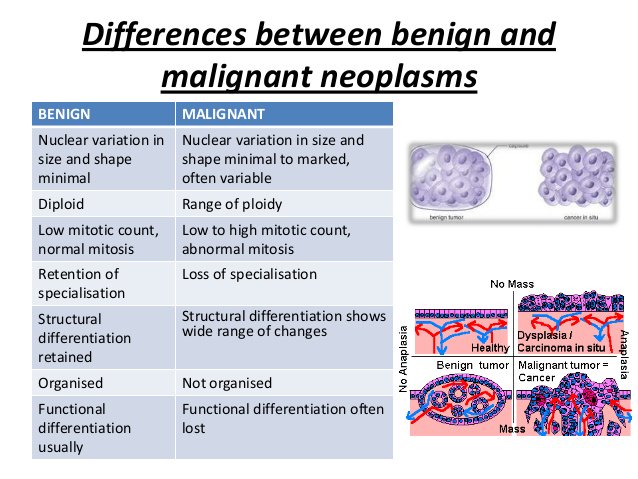 Laparoscopic colectomy for transverse colon carcinoma. Tech Coloproctol. 2010;14:25–30. [PubMed] [Google Scholar]
Laparoscopic colectomy for transverse colon carcinoma. Tech Coloproctol. 2010;14:25–30. [PubMed] [Google Scholar]
6. Leijssen LGJ, Dinaux AM, Amri R, Kunitake H, Bordeianou LG, Berger DL. A Transverse Colectomy is as Safe as an Extended Right or Left Colectomy for Mid-Transverse Colon Cancer. World J Surg. 2018;42:3381–3389. [PubMed] [Google Scholar]
7. Storli KE, Eide GE. Laparoscopic Complete Mesocolic Excision vs Open Complete Mesocolic Excision for Transverse Colon Cancer: Long-Term Survival Results of a Prospective Single Centre Non-Randomized Study. Dig Surg. 2016;33:114–120. [PubMed] [Google Scholar]
8. Chong CS, Huh JW, Oh BY, Park YA, Cho YB, Yun SH, Kim HC, Lee WY. Operative Method for Transverse Colon Carcinoma: Transverse Colectomy Versus Extended Colectomy. Dis Colon Rectum. 2016;59:630–639. [PubMed] [Google Scholar]
9. Sjo OH, Lunde OC, Nygaard K, Sandvik L, Nesbakken A. Tumour location is a prognostic factor for survival in colonic cancer patients.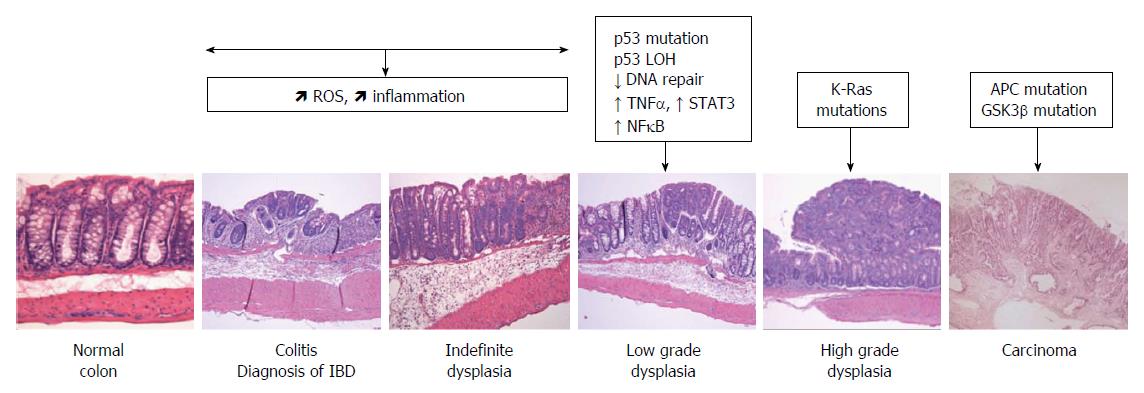 Colorectal Dis. 2008;10:33–40. [PubMed] [Google Scholar]
Colorectal Dis. 2008;10:33–40. [PubMed] [Google Scholar]
10. Hazebroek EJ Color Study Group. COLOR: a randomized clinical trial comparing laparoscopic and open resection for colon cancer. Surg Endosc. 2002;16:949–953. [PubMed] [Google Scholar]
11. Clinical Outcomes of Surgical Therapy Study Group. Nelson H, Sargent DJ, Wieand HS, Fleshman J, Anvari M, Stryker SJ, Beart RW Jr, Hellinger M, Flanagan R Jr, Peters W, Ota D. A comparison of laparoscopically assisted and open colectomy for colon cancer. N Engl J Med. 2004;350:2050–2059. [PubMed] [Google Scholar]
12. Guillou PJ, Quirke P, Thorpe H, Walker J, Jayne DG, Smith AM, Heath RM, Brown JM MRC CLASICC trial group. Short-term endpoints of conventional vs laparoscopic-assisted surgery in patients with colorectal cancer (MRC CLASICC trial): multicentre, randomised controlled trial. Lancet. 2005;365:1718–1726. [PubMed] [Google Scholar]
13. Colon Cancer Laparoscopic or Open Resection Study Group. Buunen M, Veldkamp R, Hop WC, Kuhry E, Jeekel J, Haglind E, Påhlman L, Cuesta MA, Msika S, Morino M, Lacy A, Bonjer HJ. Survival after laparoscopic surgery vs open surgery for colon cancer: long-term outcome of a randomised clinical trial. Lancet Oncol. 2009;10:44–52. [PubMed] [Google Scholar]
Survival after laparoscopic surgery vs open surgery for colon cancer: long-term outcome of a randomised clinical trial. Lancet Oncol. 2009;10:44–52. [PubMed] [Google Scholar]
14. Kim HJ, Lee IK, Lee YS, Kang WK, Park JK, Oh ST, Kim JG, Kim YH. A comparative study on the short-term clinicopathologic outcomes of laparoscopic surgery vs conventional open surgery for transverse colon cancer. Surg Endosc. 2009;23:1812–1817. [PubMed] [Google Scholar]
15. Fujita J, Uyama I, Sugioka A, Komori Y, Matsui H, Hasumi A. Laparoscopic right hemicolectomy with radical lymph node dissection using the no-touch isolation technique for advanced colon cancer. Surg Today. 2001;31:93–96. [PubMed] [Google Scholar]
16. Hasegawa S, Kawamura J, Nagayama S, Nomura A, Kondo K, Sakai Y. Medially approached radical lymph node dissection along the surgical trunk for advanced right-sided colon cancers. Surg Endosc. 2007;21:1657. [PubMed] [Google Scholar]
17. Baća I, Perko Z, Bokan I, Mimica Z, Petricević A, Druzijanić N, Situm M. Technique and survival after laparoscopically assisted right hemicolectomy. Surg Endosc. 2005;19:650–655. [PubMed] [Google Scholar]
Technique and survival after laparoscopically assisted right hemicolectomy. Surg Endosc. 2005;19:650–655. [PubMed] [Google Scholar]
18. Ichihara T, Takada M, Fukumoto S, Kuroda Y. Lymphadenectomy along the middle colic artery in laparoscopic resection of transverse colon. Hepatogastroenterology. 2004;51:454–456. [PubMed] [Google Scholar]
19. Gouvas N, Agalianos C, Papaparaskeva K, Perrakis A, Hohenberger W, Xynos E. Surgery along the embryological planes for colon cancer: a systematic review of complete mesocolic excision. Int J Colorectal Dis. 2016;31:1577–1594. [PubMed] [Google Scholar]
20. Le Voyer TE, Sigurdson ER, Hanlon AL, Mayer RJ, Macdonald JS, Catalano PJ, Haller DG. Colon cancer survival is associated with increasing number of lymph nodes analyzed: a secondary survey of intergroup trial INT-0089. J Clin Oncol. 2003;21:2912–2919. [PubMed] [Google Scholar]
21. Chen SL, Bilchik AJ. More extensive nodal dissection improves survival for stages I to III of colon cancer: a population-based study.![]() Ann Surg. 2006;244:602–610. [PMC free article] [PubMed] [Google Scholar]
Ann Surg. 2006;244:602–610. [PMC free article] [PubMed] [Google Scholar]
22. Chang GJ, Rodriguez-Bigas MA, Skibber JM, Moyer VA. Lymph node evaluation and survival after curative resection of colon cancer: systematic review. J Natl Cancer Inst. 2007;99:433–441. [PubMed] [Google Scholar]
23. Zmora O, Dinnewitzer AJ, Pikarsky AJ, Efron JE, Weiss EG, Nogueras JJ, Wexner SD. Intraoperative endoscopy in laparoscopic colectomy. Surg Endosc. 2002;16:808–811. [PubMed] [Google Scholar]
24. Feingold DL, Addona T, Forde KA, Arnell TD, Carter JJ, Huang EH, Whelan RL. Safety and reliability of tattooing colorectal neoplasms prior to laparoscopic resection. J Gastrointest Surg. 2004;8:543–546. [PubMed] [Google Scholar]
25. Yamamoto S, Fujita S, Akasu T, Yamaguchi T, Moriya Y. Laparoscopic surgery for transverse and descending colon carcinomas has comparable safety to laparoscopic surgery for colon carcinomas at other sites. Dig Surg. 2009;26:487–492. [PubMed] [Google Scholar]
26. Yamaguchi S, Kuroyanagi H, Milsom JW, Sim R, Shimada H. Venous anatomy of the right colon: precise structure of the major veins and gastrocolic trunk in 58 cadavers. Dis Colon Rectum. 2002;45:1337–1340. [PubMed] [Google Scholar]
Yamaguchi S, Kuroyanagi H, Milsom JW, Sim R, Shimada H. Venous anatomy of the right colon: precise structure of the major veins and gastrocolic trunk in 58 cadavers. Dis Colon Rectum. 2002;45:1337–1340. [PubMed] [Google Scholar]
27. Jin G, Tuo H, Sugiyama M, Oki A, Abe N, Mori T, Masaki T, Atomi Y. Anatomic study of the superior right colic vein: its relevance to pancreatic and colonic surgery. Am J Surg. 2006;191:100–103. [PubMed] [Google Scholar]
28. Yamamoto M, Okuda J, Tanaka K, Kondo K, Tanigawa N, Uchiyama K. Clinical outcomes of laparoscopic surgery for advanced transverse and descending colon cancer: a single-center experience. Surg Endosc. 2012;26:1566–1572. [PMC free article] [PubMed] [Google Scholar]
29. Amri R, Klos CL, Bordeianou L, Berger DL. The prognostic value of lymph node ratio in colon cancer is independent of resection length. Am J Surg. 2016;212:251–257. [PubMed] [Google Scholar]
30. Stracci F, Bianconi F, Leite S, Liso A, La Rosa F, Lancellotta V, van de Velde CJ, Aristei C. Linking surgical specimen length and examined lymph nodes in colorectal cancer patients. Eur J Surg Oncol. 2016;42:260–265. [PubMed] [Google Scholar]
Linking surgical specimen length and examined lymph nodes in colorectal cancer patients. Eur J Surg Oncol. 2016;42:260–265. [PubMed] [Google Scholar]
31. Fernández-Cebrián JM, Gil Yonte P, Jimenez-Toscano M, Vega L, Ochando F. Laparoscopic colectomy for transverse colon carcinoma: a surgical challenge but oncologically feasible. Colorectal Dis. 2013;15:e79–e83. [PubMed] [Google Scholar]
32. Mori S, Kita Y, Baba K, Yanagi M, Tanabe K, Uchikado Y, Kurahara H, Arigami T, Uenosono Y, Mataki Y, Okumura H, Nakajo A, Maemura K, Natsugoe S. Laparoscopic complete mesocolic excision via combined medial and cranial approaches for transverse colon cancer. Surg Today. 2017;47:643–649. [PubMed] [Google Scholar]
33. Secco GB, Ravera G, Gasparo A, Percoco P, Zoli S. Segmental resection, lymph nodes dissection and survival in patients with left colon cancer. Hepatogastroenterology. 2007;54:422–426. [PubMed] [Google Scholar]
34. Gravante G, Elshaer M, Parker R, Mogekwu AC, Drake B, Aboelkassem A, Rahman EU, Sorge R, Alhammali T, Gardiner K, Al-Hamali S, Rashed M, Kelkar A, Agarwal R, El-Rabaa S. Extended right hemicolectomy and left hemicolectomy for colorectal cancers between the distal transverse and proximal descending colon. Ann R Coll Surg Engl. 2016;98:303–307. [PMC free article] [PubMed] [Google Scholar]
Extended right hemicolectomy and left hemicolectomy for colorectal cancers between the distal transverse and proximal descending colon. Ann R Coll Surg Engl. 2016;98:303–307. [PMC free article] [PubMed] [Google Scholar]
35. Beisani M, Vallribera F, García A, Mora L, Biondo S, Lopez-Borao J, Farrés R, Gil J, Espin E. Subtotal colectomy vs left hemicolectomy for the elective treatment of splenic flexure colonic neoplasia. Am J Surg. 2018;216:251–254. [PubMed] [Google Scholar]
36. Lee YS, Lee IK, Kang WK, Cho HM, Park JK, Oh ST, Kim JG, Kim YH. Surgical and pathological outcomes of laparoscopic surgery for transverse colon cancer. Int J Colorectal Dis. 2008;23:669–673. [PMC free article] [PubMed] [Google Scholar]
37. van Rongen I, Damhuis RA, van der Hoeven JA, Plaisier PW. Comparison of extended hemicolectomy vs transverse colectomy in patients with cancer of the transverse colon. Acta Chir Belg. 2013;113:107–111. [PubMed] [Google Scholar]
38. Tjandra JJ, Chan MK. Systematic review on the short-term outcome of laparoscopic resection for colon and rectosigmoid cancer. Colorectal Dis. 2006;8:375–388. [PubMed] [Google Scholar]
Systematic review on the short-term outcome of laparoscopic resection for colon and rectosigmoid cancer. Colorectal Dis. 2006;8:375–388. [PubMed] [Google Scholar]
39. Fleshman J, Sargent DJ, Green E, Anvari M, Stryker SJ, Beart RW Jr, Hellinger M, Flanagan R Jr, Peters W, Nelson H Clinical Outcomes of Surgical Therapy Study Group. Laparoscopic colectomy for cancer is not inferior to open surgery based on 5-year data from the COST Study Group trial. Ann Surg. 2007;246:655–62; discussion 662. [PubMed] [Google Scholar]
40. Bonjer HJ, Hop WC, Nelson H, Sargent DJ, Lacy AM, Castells A, Guillou PJ, Thorpe H, Brown J, Delgado S, Kuhrij E, Haglind E, Påhlman L; Transatlantic Laparoscopically Assisted vs Open Colectomy Trials Study Group. Laparoscopically assisted vs open colectomy for colon cancer: a meta analysis. Arch Surg. 2007;142:298–303. [PubMed] [Google Scholar]
41. Jayne DG, Guillou PJ, Thorpe H, Quirke P, Copeland J, Smith AM, Heath RM, Brown JM UK MRC CLASICC Trial Group. Randomized trial of laparoscopic-assisted resection of colorectal carcinoma: 3-year results of the UK MRC CLASICC Trial Group. J Clin Oncol. 2007;25:3061–3068. [PubMed] [Google Scholar]
Randomized trial of laparoscopic-assisted resection of colorectal carcinoma: 3-year results of the UK MRC CLASICC Trial Group. J Clin Oncol. 2007;25:3061–3068. [PubMed] [Google Scholar]
42. Yamaguchi S, Tashiro J, Araki R, Okuda J, Hanai T, Otsuka K, Saito S, Watanabe M, Sugihara K. Laparoscopic vs open resection for transverse and descending colon cancer: Short-term and long-term outcomes of a multicenter retrospective study of 1830 patients. Asian J Endosc Surg. 2017;10:268–275. [PubMed] [Google Scholar]
43. Chand M, Siddiqui MR, Rasheed S, Brown G, Tekkis P, Parvaiz A, Qureshi T. A systematic review and meta-analysis evaluating the role of laparoscopic surgical resection of transverse colon tumours. Surg Endosc. 2014;28:3263–3272. [PubMed] [Google Scholar]
44. Geis WP, Coletta AV, Verdeja JC, Plasencia G, Ojogho O, Jacobs M. Sequential psychomotor skills development in laparoscopic colon surgery. Arch Surg. 1994;129:206–212. [PubMed] [Google Scholar]
45. Schwenk W, Haase O, Neudecker J, Müller JM. Short term benefits for laparoscopic colorectal resection. Cochrane Database Syst Rev. 2005:CD003145. [PMC free article] [PubMed] [Google Scholar]
Schwenk W, Haase O, Neudecker J, Müller JM. Short term benefits for laparoscopic colorectal resection. Cochrane Database Syst Rev. 2005:CD003145. [PMC free article] [PubMed] [Google Scholar]
46. Kuhry E, Schwenk WF, Gaupset R, Romild U, Bonjer HJ. Long-term results of laparoscopic colorectal cancer resection. Cochrane Database Syst Rev. 2008:CD003432. [PMC free article] [PubMed] [Google Scholar]
47. Ozben V, de Muijnck C, Esen E, Aytac E, Baca B, Karahasanoglu T, Hamzaoglu I. Is Robotic Complete Mesocolic Excision Feasible for Transverse Colon Cancer? J Laparoendosc Adv Surg Tech A. 2018;28:1443–1450. [PubMed] [Google Scholar]
48. Trastulli S, Desiderio J, Farinacci F, Ricci F, Listorti C, Cirocchi R, Boselli C, Noya G, Parisi A. Robotic right colectomy for cancer with intracorporeal anastomosis: short-term outcomes from a single institution. Int J Colorectal Dis. 2013;28:807–814. [PubMed] [Google Scholar]
49. Kim CW, Kim CH, Baik SH. Outcomes of robotic-assisted colorectal surgery compared with laparoscopic and open surgery: a systematic review. J Gastrointest Surg. 2014;18:816–830. [PubMed] [Google Scholar]
J Gastrointest Surg. 2014;18:816–830. [PubMed] [Google Scholar]
50. Fung AK, Aly EH. Robotic colonic surgery: is it advisable to commence a new learning curve? Dis Colon Rectum. 2013;56:786–796. [PubMed] [Google Scholar]
51. Buchs NC, Pugin F, Bucher P, Morel P. Totally robotic right colectomy: a preliminary case series and an overview of the literature. Int J Med Robot. 2011;7:348–352. [PubMed] [Google Scholar]
52. Araujo SE, Seid VE, Klajner S. Robotic surgery for rectal cancer: current immediate clinical and oncological outcomes. World J Gastroenterol. 2014;20:14359–14370. [PMC free article] [PubMed] [Google Scholar]
53. Antoniou GA, Riga CV, Mayer EK, Cheshire NJ, Bicknell CD. Clinical applications of robotic technology in vascular and endovascular surgery. J Vasc Surg. 2011;53:493–499. [PubMed] [Google Scholar]
54. Bokhari MB, Patel CB, Ramos-Valadez DI, Ragupathi M, Haas EM. Learning curve for robotic-assisted laparoscopic colorectal surgery. Surg Endosc. 2011;25:855–860. [PMC free article] [PubMed] [Google Scholar]
2011;25:855–860. [PMC free article] [PubMed] [Google Scholar]
55. Hohenberger W, Weber K, Matzel K, Papadopoulos T, Merkel S. Standardized surgery for colonic cancer: complete mesocolic excision and central ligation–technical notes and outcome. Colorectal Dis. 2009;11:354–64; discussion 364. [PubMed] [Google Scholar]
56. Wang Y, Zhang C, Feng YF, Fu Z, Sun YM. Comparison of short-term outcomes between laparoscopic-assisted and open complete mesocolic excision (CME) for the treatment of transverse colon cancer. Chin Clin Oncol. 2017;6:6. [PubMed] [Google Scholar]
57. Matsuda T, Sumi Y, Yamashita K, Hasegawa H, Yamamoto M, Matsuda Y, Kanaji S, Oshikiri T, Nakamura T, Suzuki S, Kakeji Y. Anatomical and embryological perspectives in laparoscopic complete mesocoloic excision of splenic flexure cancers. Surg Endosc. 2018;32:1202–1208. [PubMed] [Google Scholar]
58. Jung KU, Park Y, Lee KY, Sohn SK. Robotic transverse colectomy for mid-transverse colon cancer: surgical techniques and oncologic outcomes. J Robot Surg. 2015;9:131–136. [PubMed] [Google Scholar]
J Robot Surg. 2015;9:131–136. [PubMed] [Google Scholar]
59. Mistrangelo M, Allaix ME, Cassoni P, Giraudo G, Arolfo S, Morino M. Laparoscopic versus open resection for transverse colon cancer. Surg Endosc. 2015;29:2196–2202. [PubMed] [Google Scholar]
symptoms and treatment of cancerous tumors in the Federal Scientific and Practical Center of the Federal Medical and Biological Agency
Colon cancer is the most common type of malignant tumor of the gastrointestinal tract. This is a multifactorial disease, which is based on genetic factors, environmental factors, as well as inflammatory pathology of the gastrointestinal tract.
Colon cancer often develops in older patients, against the background of polyps and other changes in the large intestine. In the presence of certain provoking factors, polyps can eventually transform into a malignant tumor. The recommendation to undergo an annual medical examination is due to the timely diagnosis of polyps and other benign neoplasms before their malignancy.
In the treatment of colon cancer, surgical methods, radiation and drug therapy are used. Drug treatment includes chemotherapy, targeted therapy, immunotherapy.
Departments and functions of the colon
The colon, together with the rectum, forms the large intestine, the last section of the digestive tract. In turn, the colon consists of several sections: the caecum with the appendix, the ascending colon, the transverse colon, the descending colon, and the sigmoid colon.
The wall of the colon consists of three layers: mucous, muscular and serous. The growth of the polyp begins from the innermost shell – the mucous layer.
From the small intestine, the digested food bolus enters the colon. The job of the colon is to form stool. At this stage, the bacteria living in the large intestine complete the chemical process of digestion.
Colon cancer symptoms
Colon cancer often causes no symptoms in the early stages. As it progresses, it is accompanied by the following symptoms:
As it progresses, it is accompanied by the following symptoms:
- Prolonged diarrhea or constipation
- Change in character, color, shape of stools, band-like stools, dark brown or black bloody stools
- Bleeding from the rectum
- Persistent abdominal pain, gas, bloating, cramps
- Nausea, vomiting
- Persistent urge to defecate after defecation
- Feeling of incomplete emptying of the bowels after going to the toilet
- Rapid weight loss
- Anemia due to intestinal bleeding
- Fatigue, weakness (symptoms of anemia and tumor intoxication)
Tumor metastases that spread to other organs can give characteristic symptoms of the lesion. Thus, colon cancer metastases to the liver cause jaundice.
Cancer that grows large can close the colon and cause an obstruction. Intestinal obstruction is a life-threatening emergency. If you suspect an obstruction, it is recommended to immediately call an ambulance or consult a doctor.
Obstruction symptoms include:
- Severe, cramping pains in the abdomen that bother regardless of eating
- Absence of stool and passing flatus
- Sharp, sudden swelling, rumbling in the abdomen
- Multiple vomiting
Tumor stages
It is possible to determine the stage of colon cancer only after examining the patient.
Doctors use the TNM staging system, where T (tumor) is the size of the tumor, N (nodus) is spread to the lymph nodes, M (metastasis) is the presence of metastases in other organs and structures of the body. The stage of the cancer indicates the extent of spread and size of the tumor.
There are five stages of colon cancer:
- Stage 0 (carcinoma in situ) . This stage identifies abnormal or precancerous cells in the mucosal layer, the innermost layer of the colon.
- Stage 1. The tumor has invaded the mucosa but has not spread beyond the muscle layer or to nearby lymph nodes.

- Stage 2. The cancer has spread beyond the muscle layer to the outer serous layer of the colon wall, and possibly to adjacent organs.
- Stage 3. Growth of a cancerous tumor through all layers with spread to the lymph nodes.
- Stage 4. Metastasis of a cancerous tumor to the liver, lungs, ovaries.
Causes
Colon cancer occurs when abnormal (abnormal) cells grow and divide uncontrollably. In this case, the process of programmed cell death is disrupted. Cancer is growing steadily. Until the end, the causes of the appearance of abnormal cells and precancerous polyps, from which cancer is formed, remain unclear. Certain factors increase the risk of polyps turning into cancer. These factors include certain diseases, including hereditary, as well as lifestyle.
Lifestyle factors:
- Smoking. Tobacco use, including e-cigarettes, increases the risk of developing cancer
- Alcohol.
 Alcohol abuse increases the risk of colon cancer
Alcohol abuse increases the risk of colon cancer - Obesity. Obese people have a higher risk of developing cancer and dying from colon cancer
- Insufficient physical activity. Regular physical activity reduces the risk of colon cancer
- Low fiber diet , high fat, red meat.
Medical factors in the development of cancer:
- Inflammatory bowel disease. It includes ulcerative colitis, Crohn’s disease, conditions that increase the risk of developing cancer. The risk increases if the duration of the inflammatory disease in history is seven years or more.
- Hereditary syndromes that increase the risk of developing a tumor of the colon, such as familial adenomatous polyposis, Lynch syndrome (hereditary non-polyposis colorectal cancer). A small percentage of cancers are associated with gene mutations.
- Diabetes mellitus. People with diabetes have an increased risk of developing cancer.

- Cases of bowel cancer in a relative of the first line – mother, father, brother, sister
- Radiation therapy. Radiation therapy for previously diagnosed abdominal cancer increases the risk of colon cancer
Colon cancer diagnostics
If colon cancer is suspected, the doctor conducts a survey, performs a standard physical examination. The examination also includes performing a digital rectal examination, as well as palpation of the abdomen for seals.
The doctor orders laboratory blood tests, such as a complete and biochemical analysis, to determine or rule out iron deficiency anemia. Anemia occurs as a result of bleeding from the tumor.
Laboratory tests also include the study of feces for occult blood, the determination of the level of cancer embryonic antigen (CEA). Cancer embryonic antigen is a protein-based chemical that is synthesized in colon cancer. It is a marker of cancer. Controlling the level of CEA over time helps to assess the prognosis and understand how the cancerous tumor responds to treatment.
Flexible sigmoidoscopy
Flexible sigmoidoscopy – examination of the anus, rectum and sigmoid using a sigmoidoscope. The device is a flexible endoscope equipped with a video camera for visualizing the mucous layer, no more than sixty centimeters long.
Colonoscopy
Colonoscopy is an invasive endoscopic examination of the inside of the large intestine using a flexible, thin endoscope. The endoscope is equipped with a camera for examining the mucosa. If any suspicious areas are found, the doctor inserts surgical instruments, takes a tissue sample for histological examination, and also removes polyps. Colonoscopy requires careful preparation, taking medications to cleanse the intestines. It is performed both at the screening stage and when a malignant tumor of the colon is suspected.
Colonoscopy is a highly effective diagnostic and treatment method. Unlike sigmoidoscopy, colonoscopy examines all parts of the large intestine.
CT colonography
CT colonography, also known as “virtual colonoscopy”.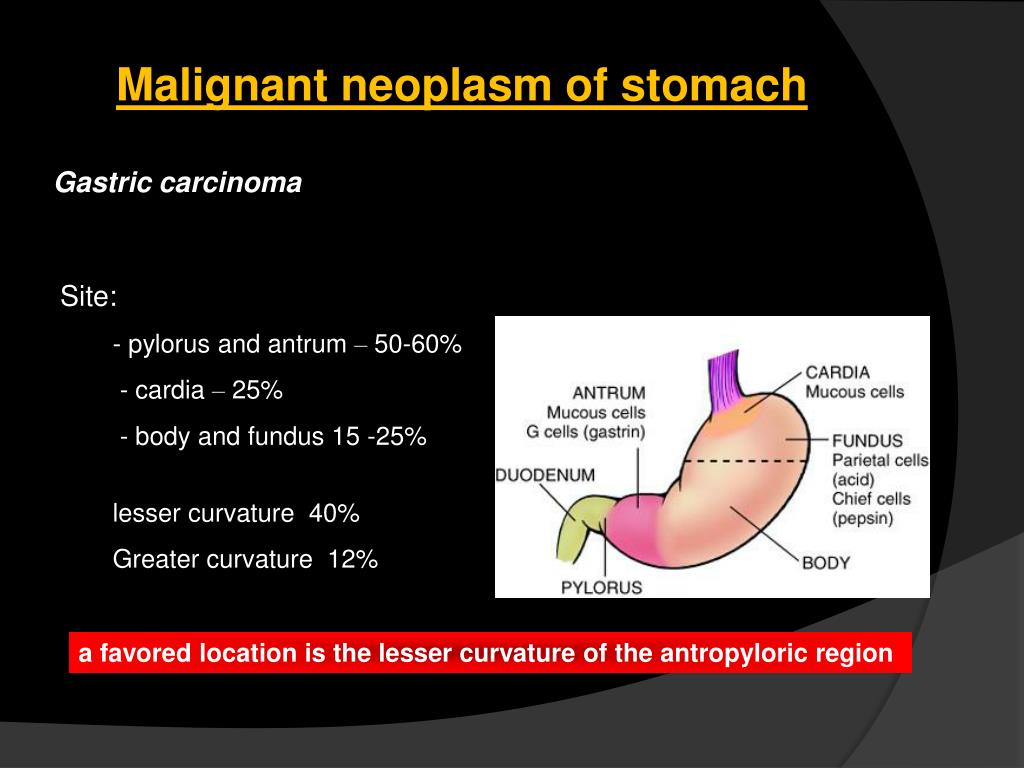 The method is based on the use of a CT scanner to create a three-dimensional image of the colon and rectum. During the test, gas is used to inflate the intestines with a thin, flexible tube. Then perform computed tomography in different projections. As before a colonoscopy, you need preparation in the form of bowel cleansing. This study is indicated for patients who, for whatever reason, are contraindicated in performing a colonoscopy.
The method is based on the use of a CT scanner to create a three-dimensional image of the colon and rectum. During the test, gas is used to inflate the intestines with a thin, flexible tube. Then perform computed tomography in different projections. As before a colonoscopy, you need preparation in the form of bowel cleansing. This study is indicated for patients who, for whatever reason, are contraindicated in performing a colonoscopy.
Prevention
Knowing about cases of colon cancer in the family is important for timely screening. If risk factors are present, doctors recommend screening at age 45, or 10 years younger than the age at which a relative was diagnosed with colon cancer. People at increased risk, such as those with a history of familial polyposis, should consider screening earlier. Screening includes performing a colonoscopy, taking a stool test for occult blood. Colonoscopy is recommended every 10 years. The study of feces for occult blood is carried out 1 time in 2 years.
Lifestyle recommendations include:
- Complete, balanced nutrition. Inclusion in the diet of fiber, vegetables, fruits, whole grains
- Smoking cessation
- Drinking a reasonable amount of alcohol
- Active lifestyle with regular moderate to vigorous exercise
- Maintaining a healthy weight
Colon cancer treatment at FNCC
The Federal Research and Clinical Center for the treatment of colon cancer uses surgical methods and drug therapy. Drug treatment includes chemotherapy, targeted therapy, immunotherapy. When choosing a method, a multidisciplinary team of doctors takes into account the location, stage of the tumor, the aggressiveness of the cancer, the degree of spread, general health, and also takes into account chronic comorbidities.
Early treatment
Surgery at an early stage of cancer involves a minimally invasive procedure:
- Removal of polyps during colonoscopy.
 Cancer localized in the polyper at an early stage and without spread is removed completely during endoscopy.
Cancer localized in the polyper at an early stage and without spread is removed completely during endoscopy. - Endoscopic mucosal resection. The procedure involves the removal of a larger polyp and part of the submucosa using endoscopic instruments.
- Laparoscopic intervention. During laparoscopy, polyps are removed that are difficult to remove endoscopically
Treatment of common forms
If a cancerous tumor grows through all layers, an operation is performed to remove a section of the large intestine – resection of a part of the large intestine with a tumor:
- Open colon resection. During the operation, the surgeon makes an incision on the anterior abdominal wall and removes the area of the colon affected by the tumor, with certain groups of lymph nodes.
- Laparoscopic colon resection. The difference with the open type of operation is only in online access. Laparoscopy involves the creation of several accesses – incisions with the introduction of laparoscopic surgical instruments and a video camera.
 During the operation, in both cases, nearby lymph nodes are removed. Laparoscopy is currently the preferred surgical method, routine in most medical organizations. It is less painful, provides faster patient recovery compared to open surgery.
During the operation, in both cases, nearby lymph nodes are removed. Laparoscopy is currently the preferred surgical method, routine in most medical organizations. It is less painful, provides faster patient recovery compared to open surgery.
The operation to remove a section of the colon is completed either by suturing the two ends of a healthy intestine, or by creating a stoma. The formation of a stoma involves the creation of an opening in the abdominal wall and the opening of the intestinal lumen into the opening to preserve the passage of the stool. The stoma may be temporary until it heals, or permanent if stitching is not possible.
Chemotherapy
Chemotherapy for bowel cancer, which consists in taking drugs against cancer cells, is performed at different stages of treatment:
- Before surgery in combination with radiotherapy to reduce the initial size of the tumor
- After surgery to reduce the risk of recurrence
- Palliative chemotherapy to slow the progression of advanced cancer, reduce symptoms
Chemotherapy can be oral, intravenous, or combined.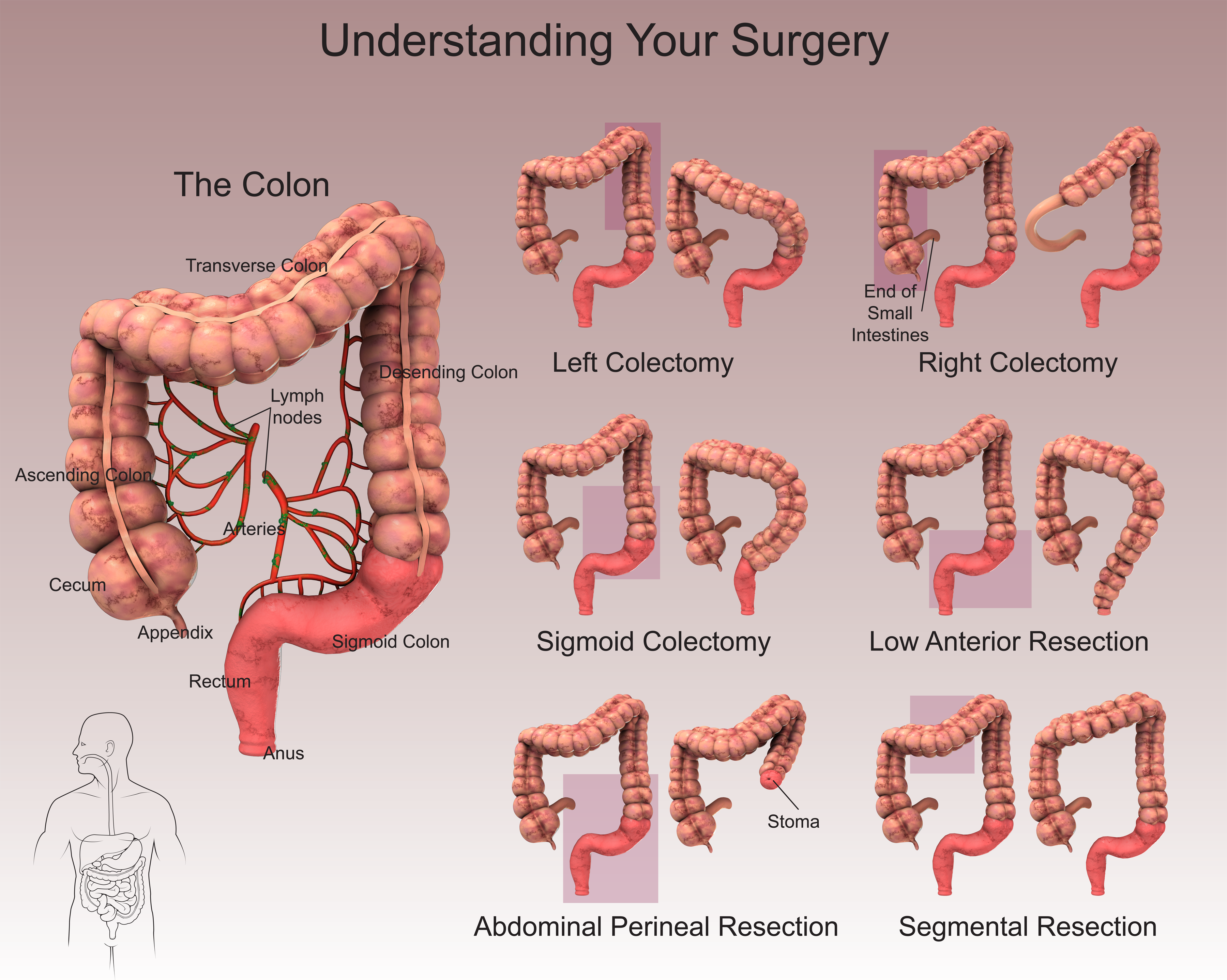 It is carried out in courses lasting 2-3 weeks, depending on the stage of the disease.
It is carried out in courses lasting 2-3 weeks, depending on the stage of the disease.
Side effects of chemotherapy include:
- Fatigue, weakness
- Diarrhea
- Nausea, vomiting
- Mouth ulcers
- Hair loss
- Numbness, tingling, burning sensation in arms and legs
- Weakening of the immune system, increased susceptibility to infectious diseases
These symptoms disappear gradually after the completion of the course of treatment.
Radiotherapy
Radiation therapy is based on energy sources, such as X-rays, that can destroy a cancerous tumor. Radiotherapy is used before surgery to reduce the size of the tumor. When surgery is not possible, radiation therapy is given as palliative care to relieve symptoms.
Targeted therapy
Targeted therapy involves taking drugs that affect the biological processes of cancer cells, blocking their spread in the body. The drugs target receptors located on the surface of cancer cells. Blocking the receptors stops tumor growth.
Blocking the receptors stops tumor growth.
Immunotherapy
Immunotherapy involves the administration of drugs that act on the immune system to stimulate the fight against cancer. Cancer cells synthesize substances that make the tumor “invisible” to the immune system. Immunotherapy stimulates antibodies to recognize molecules on the surface of cancer cells and bind to them.
In the Department of Surgery No. 1 of the Federal Research and Clinical Center of the Federal Medical and Biological Agency of Russia, all types of surgical treatment of colon cancer are performed, including the minimally invasive method. The employees of the department are certified in the specialty “oncology” and “coloproctology”, they are proficient in all methods of surgical treatment. For the development and introduction into clinical practice of new minimally invasive methods in oncology, in 2018 the staff of the department was awarded the Prize of the Government of the Russian Federation in the field of science and technology.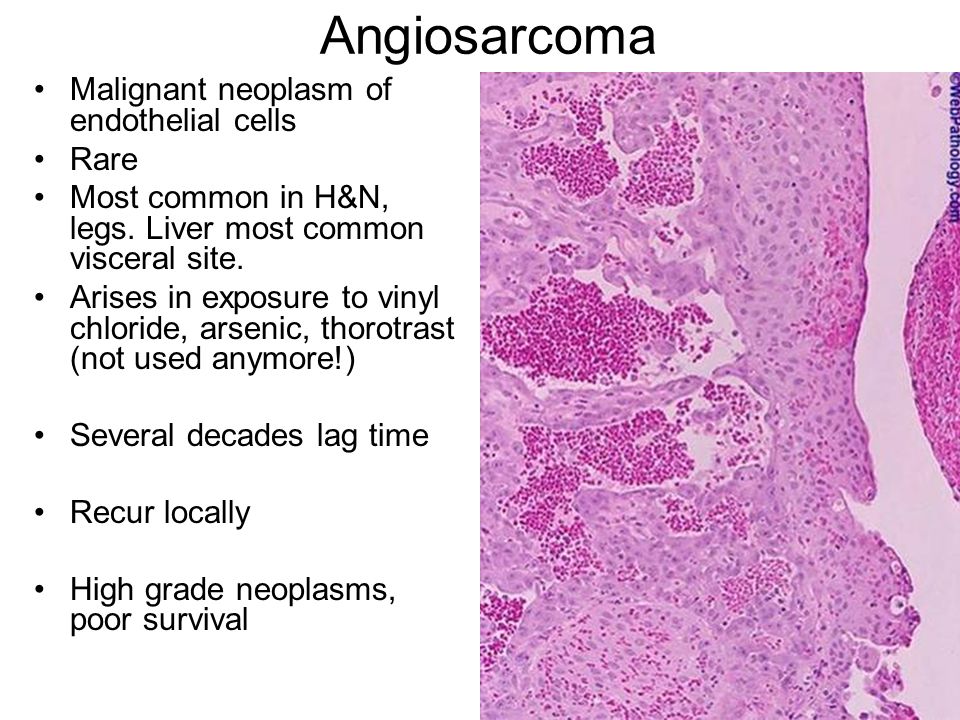
Treatment prices
Chemotherapy
Surgery
Primary appointment (examination, consultation) with an oncologist
2,250 ₽
Repeated appointment (examination, consultation) with an oncologist
1,950 ₽
Medical colonoscopy. Endoscopic resection of the mucous membrane
47 450 ₽
This article is informational material and is not intended for self-diagnosis and self-treatment. If signs of discomfort appear, you should contact your doctor.
Colon cancer – symptoms and signs, diagnosis
Table of contents
Colon cancer is an oncological disease that affects part of the intestine, the functions of which include the reabsorption of fluid and the formation of feces.
Colon cancer is classified into adenocarcinoma, neuroendocrine and squamous cell tumors. It is possible to determine the histological form of the disease only after the diagnosis of the neoplasm using endoscopy and surgery.
Colon cancer – stages
Colon cancer is classified by a single international methodology that determines the course of the disease depending on the symptoms and signs of the development of the disease. A common designation for the development of colon cancer is used to predict effective treatment among physicians and scientific research.
The staging of the disease depends on the spread of cancer cells in the body. From the site of the tumor to its metastasis to other organs.
Stage 1 – a neoplasm is diagnosed only in the tissues of the colon,
Stage 2 – germination of cancer cells in the intestinal cavity,
Stage 3 – the tumor spreads to the lymphatic vessels and nodes,
Stage 4 – metastasis to other organs.
Colon cancer – symptoms
This dangerous disease in the early stages is asymptomatic. Signs of colon cancer appear as early as stages 3 and 4. Symptoms include pain in the middle of the abdomen, indigestion, and discharge of blood and mucus. The general well-being of a person is also deteriorating. Intoxication of the body with cancer cells is detected by such signs as fever, weakness, fatigue, loss of appetite and, as a result, weight loss.
The general well-being of a person is also deteriorating. Intoxication of the body with cancer cells is detected by such signs as fever, weakness, fatigue, loss of appetite and, as a result, weight loss.
Diagnosing the general condition of the body and conducting preventive examinations allows you to identify colon cancer before the onset of symptoms and signs, which helps to organize the correct treatment regimen.
Colon cancer – causes of development
The causes of colon cancer are:
- genetic heredity,
- chronic inflammatory bowel disease,
- bad habits,
- sedentary lifestyle.
0024
Colon cancer – diagnosis
The patient’s complaints and symptoms of the disease usually begin with intestinal colic. At a consultation with a specialist, the reasons for the occurrence of signs of disruption of the internal organs and general condition are clarified.
Colon cancer in some cases can be identified at the initial examination by palpation of the abdominal cavity.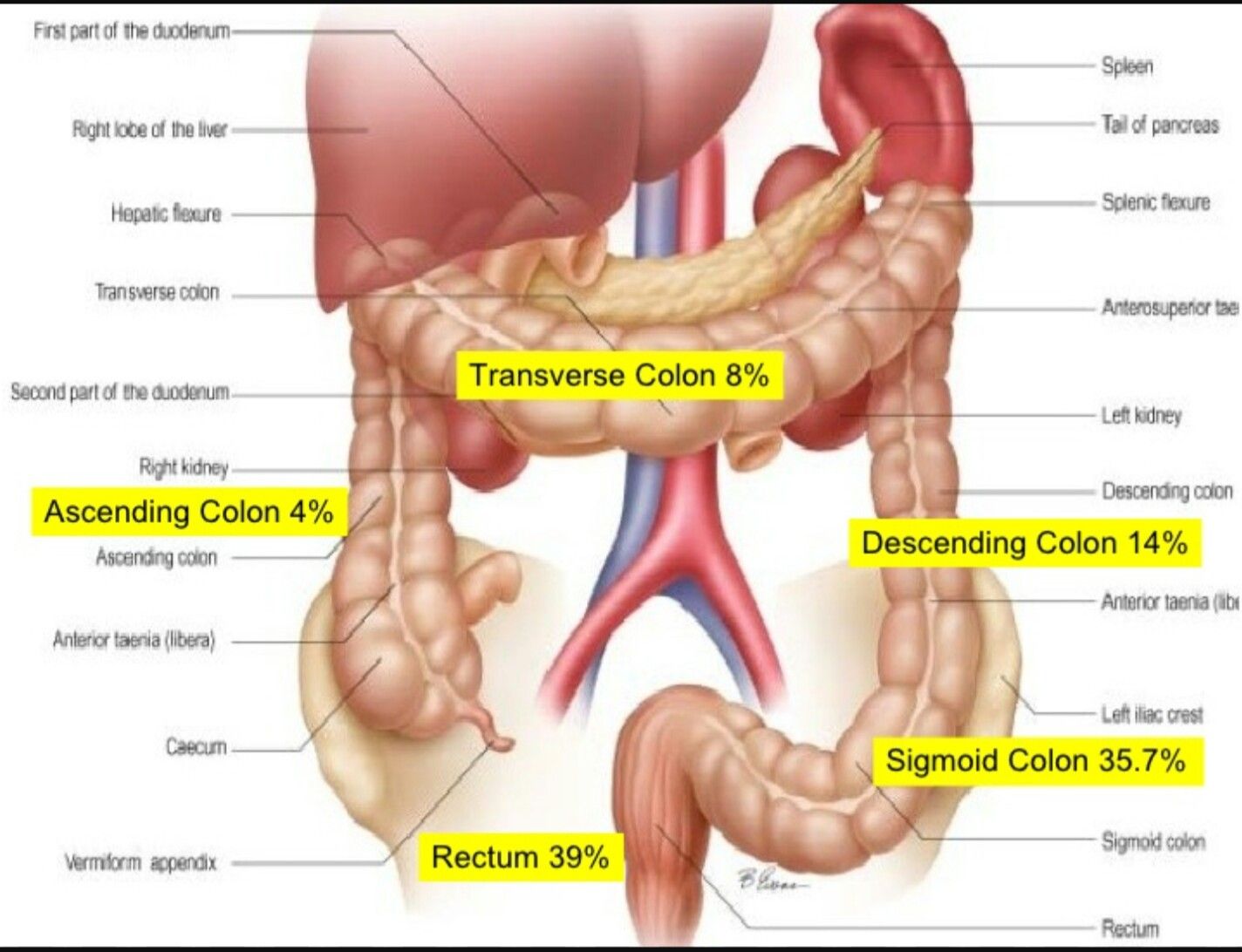 After that, endoscopic examinations are prescribed with the taking of biomaterial. This study allows the doctor to determine the size, nature and stage of the tumor, which is extremely important for the percentage of possible recovery.
After that, endoscopic examinations are prescribed with the taking of biomaterial. This study allows the doctor to determine the size, nature and stage of the tumor, which is extremely important for the percentage of possible recovery.
If it is impossible to use the endoscopic method of treatment, irrigoscopy is prescribed, which also helps to assess the nature of the neoplasm. Computer diagnostics allows you to determine the stage of the disease and the spread of cancer cells in the body. Colon cancer can be complicated by concomitant pathologies, so it is necessary to prescribe examinations of blood vessels, lymph nodes, lungs and heart, as well as blood and urine tests.
Colon cancer – treatment
Colon cancer is treated by available combined methods, with the use of surgery and chemotherapy.
Depending on the signs of the tumor and the symptoms of the patient, several types of treatment are selected. The staging of colon cancer allows you to either immediately perform a radical removal of the tumor site, or to carry out a complex of supporting procedures.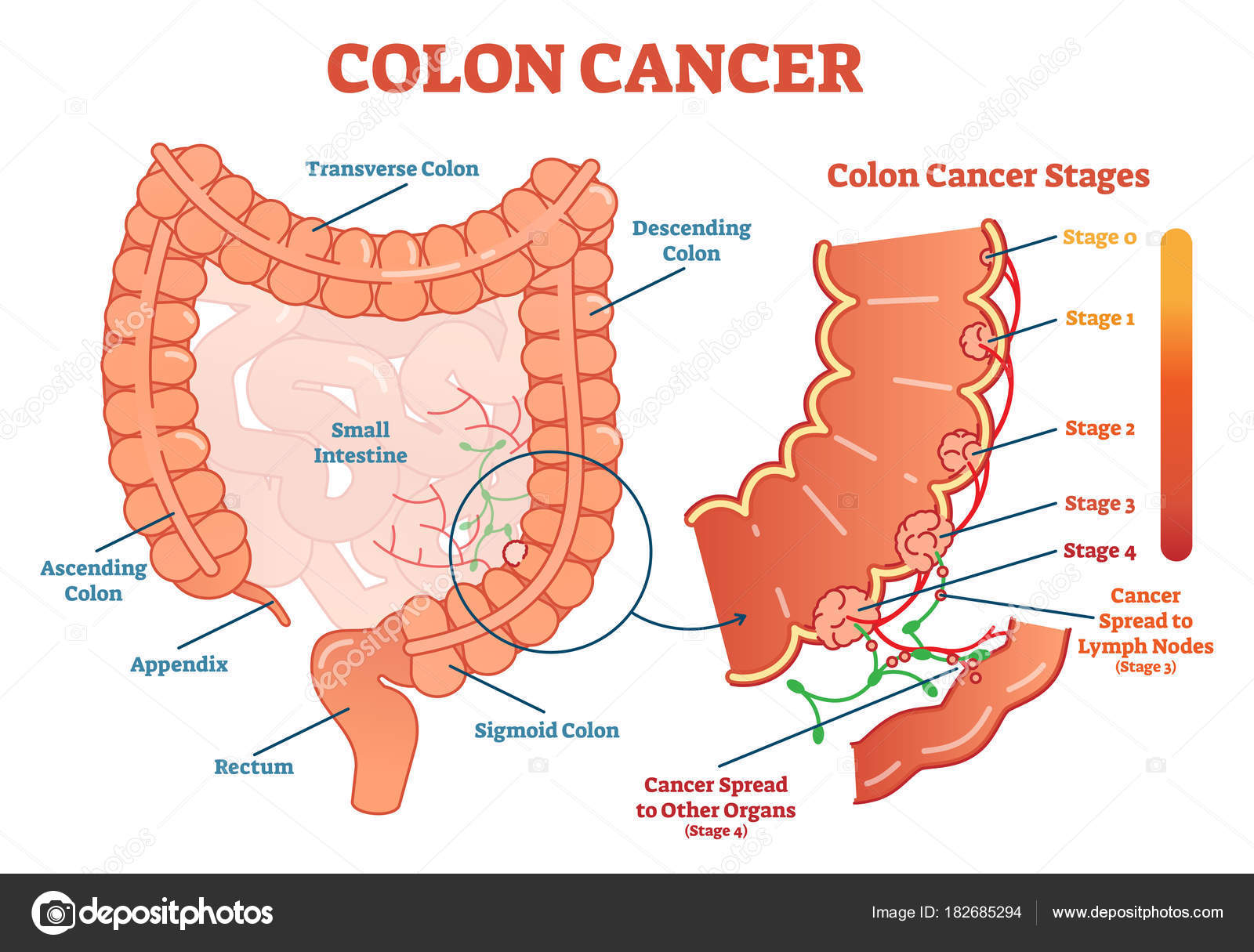
In the first and second stages, only part of the intestinal cavity can be removed. If the colon cancer has progressed to the lymph nodes, then they are removed too. After resection of part of the intestine, chemotherapeutic treatment is performed. Taking specialized drugs reduces the risk of relapse, and also helps to relieve a large number of symptoms of the disease. But after taking chemotherapy, side effects may occur. Inflammatory processes in the oral cavity, reactions on the skin, digestive disorders and a decrease in blood sprouts. Such side effects are corrected by changing drugs to reduce symptoms.
Colon cancer is also treated with modern treatments such as HiFu therapy. This is an improved analog of radiation therapy, which allows high-frequency ultrasound exposure to the intestinal cavity through the peritoneum.
A feature of the rehabilitation period of colon cancer is the setting of an intestinal stoma. Such a measure is necessary for the healing of the resection site and is removed after 3-6 months from the date of the operation.






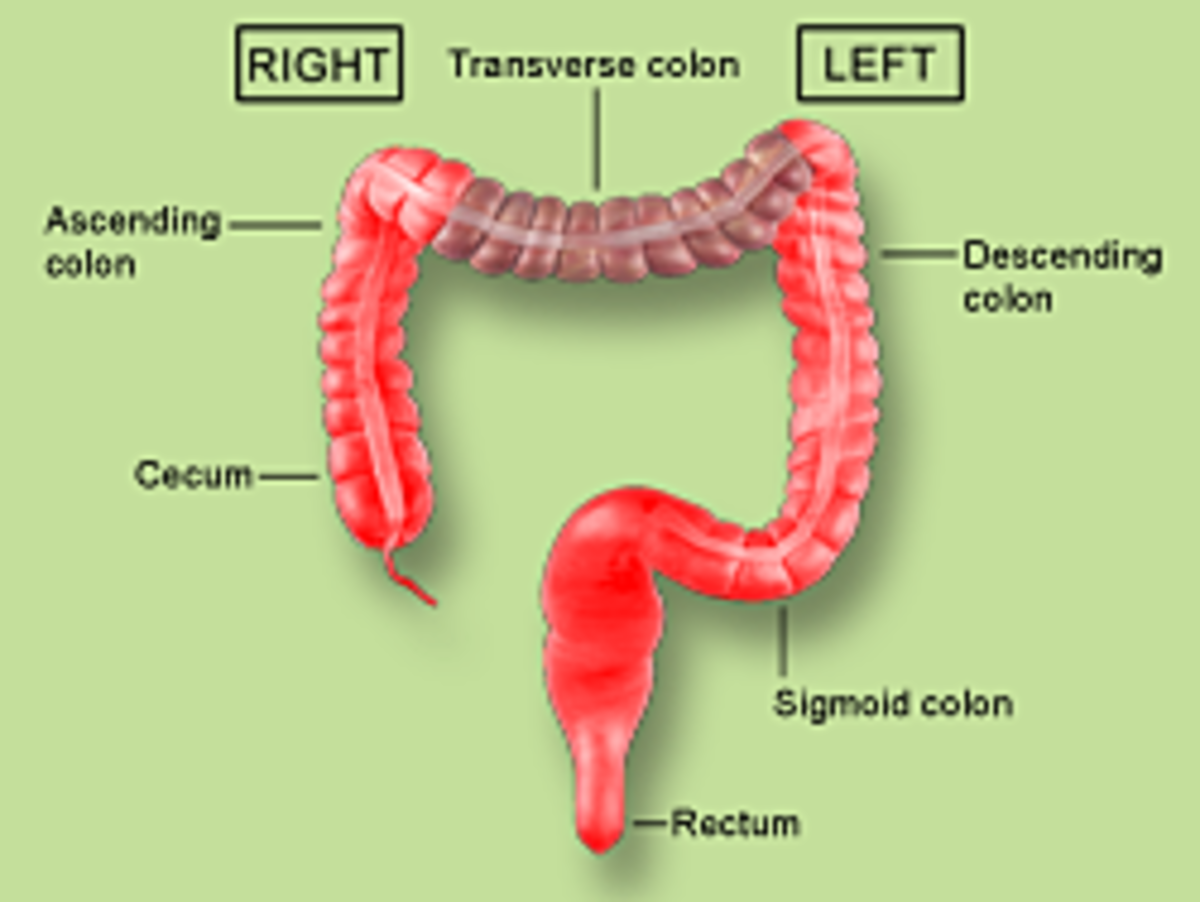
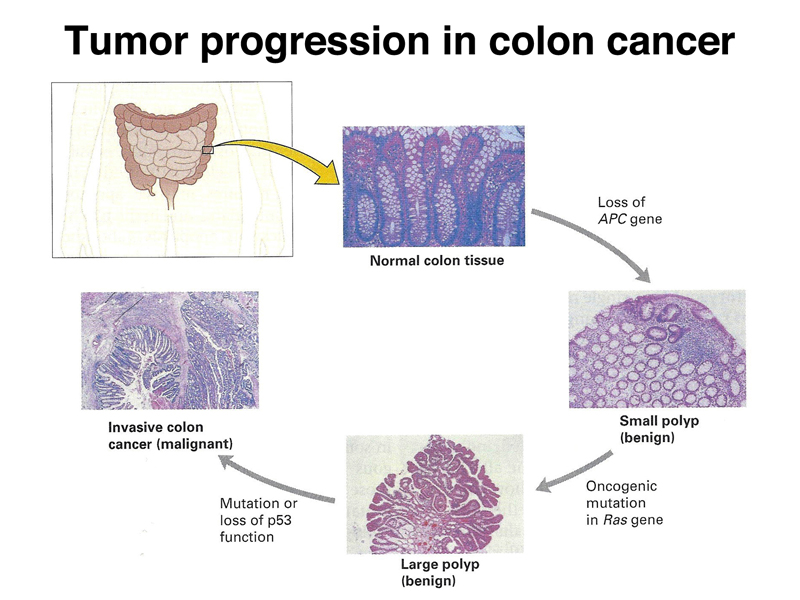 Alcohol abuse increases the risk of colon cancer
Alcohol abuse increases the risk of colon cancer
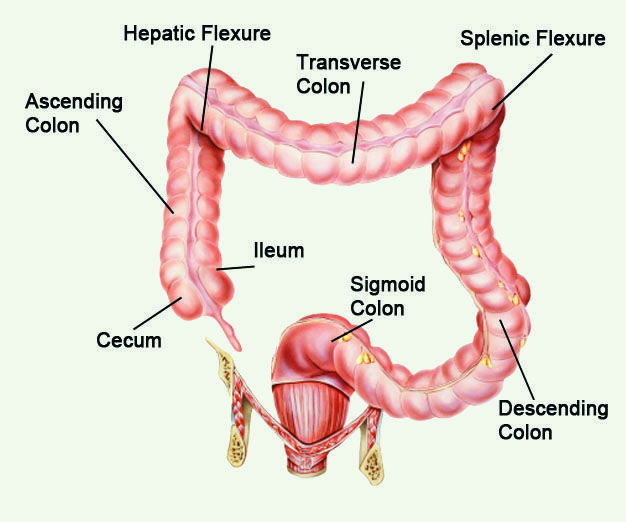 Cancer localized in the polyper at an early stage and without spread is removed completely during endoscopy.
Cancer localized in the polyper at an early stage and without spread is removed completely during endoscopy.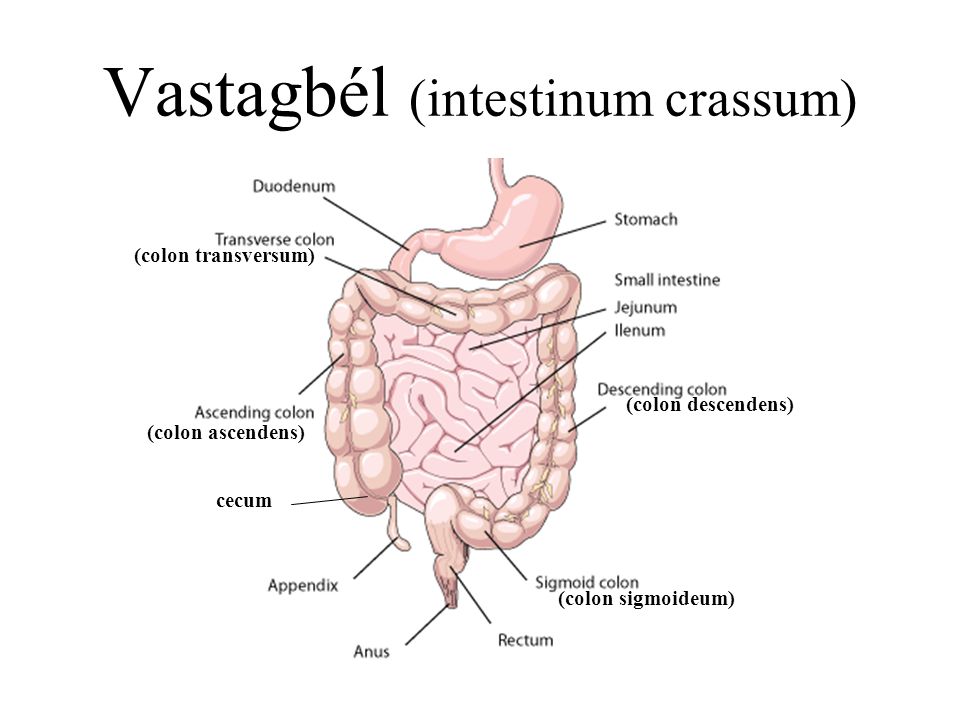 During the operation, in both cases, nearby lymph nodes are removed. Laparoscopy is currently the preferred surgical method, routine in most medical organizations. It is less painful, provides faster patient recovery compared to open surgery.
During the operation, in both cases, nearby lymph nodes are removed. Laparoscopy is currently the preferred surgical method, routine in most medical organizations. It is less painful, provides faster patient recovery compared to open surgery.